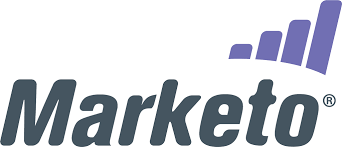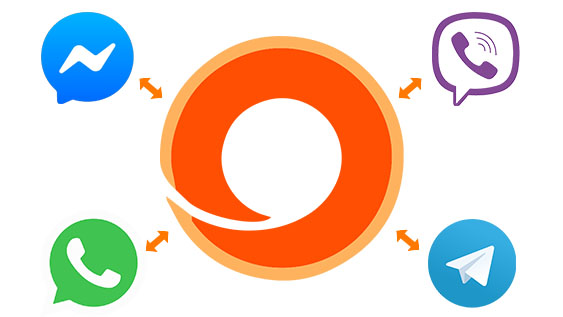

SMS for New Enrollment: 4 Reasons Why it Works
There are currently nearly 6,000 colleges and universities throughout the United States. With so much competition to attract new students, higher education, marketing needs to be smarter than ever.
As Generation Y (Millennials) continues to graduate and enter the workforce, Generation Z (born between 1995 and 2010) is rapidly taking their place. In a recent poll, 57% of 18-21-year-olds enrolled in a two- or four-year college. That’s five percent higher than a comparative study of Millennials and fourteen percent higher than Gen X in previous studies.
As the new generation of undergrads prepares to enter college, many institutions look to alter how they market to prospective students. Here are the top 4 reasons why you should leverage SMS for new enrollment strategies.
1. Gen Z Is a Unique Kind of Student
Each generation has its own unique needs and requires relevant learning strategies. The era one grows up within shapes how one approaches the world, of course. Their perspective can make things challenging for educators and institutions run by previous generations who likely had other ways of learning and tackling their studies.
Some refer to Gen Z as the iGeneration, and with good reason. Many in this generation were not born with iPhones in their hands (or the hands of their parents). Yet, their experience with the Internet and technology revolutions has been markedly different. They don’t know the scramble for microfiche and encyclopedias at the library or loading discs to a home computer to perform research.
Gen Z students are digital natives, and most can’t fathom not having access to devices. Smartphones, computers, and the Internet have been prevalent not only in their private lives but also on their education journey. They’ve grown up in an era of on-demand content, apps to meet virtually any need, and portals to a seemingly endless amount of information. This exposure has shaped the perspective of these students.
This is the generation of “self-educators” who expect constant, instantaneous access to everything they need. Gen Z’s list of expectations is long, and their attention spans are short, meaning universities have to not only capture but hold their focus.
The Gen Z population not only weathered an economic recession in 2008 but are now holding their own through a global pandemic. They are generally more budget conscious and tend to put forth a lot more research before making decisions.
Where the Millennial generation began to pave the way for shaking up the status quo in terms of job tenure and staying in one place, Gen Z has seen first-hand that there can – and should – be other ways. Their non-traditional approaches are also present in education, where they want digital resources and opportunities to take courses online. SMS for new enrollment strategies may be new to some older generations, but you can bet Gen Z is expecting it.
Related: SMS Marketing for Universities: Your Key to Reaching a New Generation
2. Higher Education Marketing Needs a Makeover
In 2019, colleges and universities spent $2.2billion on advertising. However, these large advertising budgets aren’t translating into higher enrollment numbers. Enrollment has been on a steady decline over the past few years.
The enrollment downturn is due to several factors, including the highly budget-conscious Gen Z students. They already have access to a wealth of knowledge at their fingertips through the Internet. For all of the ways a digital lifestyle has helped higher education reach students, it’s also created an air of competition for some. Students need to see the value of formal coursework and the investment of time and money.
It takes more convincing to justify the high costs of college degrees to potential Gen Z students. That means that university marketers should allocate some of the marketing budgets towards more effective means of communication.
Using SMS for new enrollment means you can reach prospective students in a way that makes sense for them. Reports show that 98% of Gen Z have a smartphone, and they’re using them often. More than half of Gen Z smartphone owners use their devices five or more hours each day.
You won’t reach Gen Z with flyers in the mail or even through emails. 75% of Gen Z respondents in a recent survey said they’d rather text a person – even those they know well – than make a phone call. Since most text messages are opened in less than 5 minutes, text is the simplest and most effective way to reach students for new enrollment.
3. Personalized Digital Marketing Increases Reach and Effectiveness
Most higher education marketing involves bombarding students with as many catalogs, pamphlets, and emails as possible. Once upon a time, this strategy worked. Students and their parents would spread out flyers on their dining room tables, and review offers from universities to tour the campus and accept offers for the next school year. High-gloss, full-color images of campus spaces, dorm rooms, and the university teams once enticed new students (at a significant cost to the institution).
That was then.
Now, students aren’t as engaged with print marketing materials. The effectiveness of mass email marketing has also dropped as inboxes have become inundated with newsletters and communication from a variety of sources. That doesn’t mean there is no space for print or email marketing, of course. It does mean that reaching this generation requires a multi-layered approach.
A straightforward way to reach prospective Gen Z students is through multi-channel marketing with a heavy emphasis on digital communications. While many colleges have dedicated social media pages that work concurrently with their direct marketing components, social media is also a place for “shouting” a message. It makes sense to play on the same field as the students you’re trying to attract, and there is no better field than their most precious tool – mobile phones.
SMS for new enrollment allows you to reach out and stay in contact with prospective students. Short messages with a clear call to action increase engagement, and you can share flyers or more long-form content through links. With SMS, you can create intrigue while sharing valuable information that you know will be received.
Related: How to Use a College Urgent Notification System to Stay Engaged with Your People During a Crisis
4. SMS Improves Higher Ed Communications
A rising trend in higher education marketing is mobile marketing – specifically SMS for new enrollment. With 85% of Americans reporting that they’ve received text messages from brands, the trend is gaining popularity across many sectors.
Since this new generation of students is so comfortably mobile, higher education marketers must recognize and respond to this trend. SMS allows colleges and universities to provide a personal and instantaneous communication experience desired by many prospective and current students.
Higher education institutions can use SMS to send information or invitations to campus visits and support the enrollment journey from start to finish. You can leverage SMS to send invitations to events, reminders of meetings, and alerts to deadlines from departments such as Financial Aid and course enrollments.
Using a professional SMS platform like TrueDialog will help you reach a new generation. Easily craft and distribute messages to subscribers and stay connected with prospective students. Add a personal touch to their experience with your school with SMS for new enrollment.
 Salesforce
Salesforce




